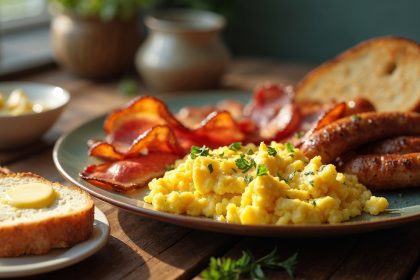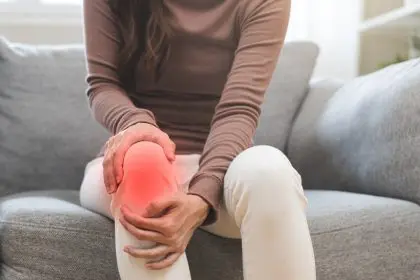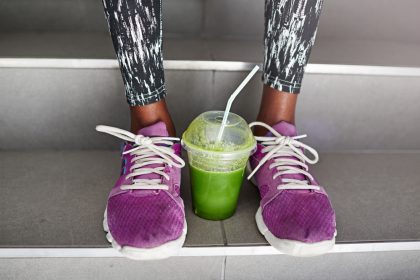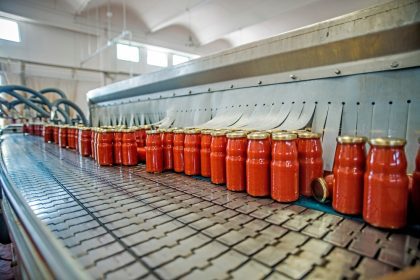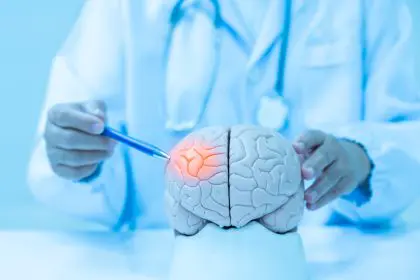Look down at your fingernails right now. Go ahead, I’ll wait. Those ten tiny surfaces might seem like nothing more than a canvas for your next manicure, but they’re actually broadcasting some serious intel about what’s happening inside your body. Your nails are like the gossip columnists of your health – they’re not afraid to spill the tea about your nutritional secrets.
While most of us are busy obsessing over our skin or hair, our nails have been quietly keeping score of our dietary wins and fails. Those ridges, spots, and color changes aren’t just random imperfections – they’re your body’s way of passing notes about what’s missing from your plate. It’s like having ten tiny nutritionists attached to your fingertips, each one giving you personalized feedback in real-time.
Why your nails are nutritional report cards
Your fingernails might seem like simple structures, but they’re actually complex formations made primarily of keratin – the same protein that forms your hair. Unlike your hair, though, nails grow from a matrix of living tissue that’s highly sensitive to your body’s nutritional status. This makes them surprisingly accurate indicators of what’s happening with your diet.
Nails grow slowly, at about 3.5 millimeters per month for fingernails and even slower for toenails. This gradual growth means that changes in your nails reflect your nutritional status over weeks and months rather than just day-to-day fluctuations. They’re essentially recording your dietary patterns over time, creating a visible history of your nutritional habits.
The nail plate – that hard part we typically think of as “the nail” – is formed by living cells in the nail matrix that gradually die and harden as they’re pushed outward. These cells require a steady supply of nutrients to form properly. When certain nutrients are missing, the quality of the nail production suffers, leaving visible clues.
Blood flow to your nail beds also plays a crucial role in their appearance. Nutrients are delivered to your nails via your bloodstream, meaning that the health of your circulation affects how well your nails receive their nutritional supplies. This connection means that not only can your nails reveal direct nutritional deficiencies, but they can also hint at circulation issues that might be affecting nutrient delivery throughout your body.
Interestingly, because nails grow continuously, they can sometimes show a timeline of nutritional events. A sudden stress or illness might appear as a horizontal line across all your nails, while ongoing deficiencies might manifest as more consistent changes in texture or appearance. These visible markers make your nails one of the few external body parts that keep such a clear nutritional diary.
The white spots mystery: what they actually mean
Those tiny white spots that occasionally appear on your nails have probably sparked concern at some point in your life. Maybe you’ve heard they indicate a calcium deficiency, leading you to chug milk in hopes of making them disappear. But the real story is a bit more complex – and has little to do with your calcium intake.
Contrary to popular belief, those white spots (technically called “leukonychia”) are rarely related to calcium deficiency. In most cases, they’re actually caused by minor trauma to the nail matrix – that’s right, you probably bonked your finger on something and don’t even remember it. The injury happened weeks ago, and now the evidence is finally growing out with your nail.
However, when white spots appear on multiple nails simultaneously or form distinctive patterns, nutrition might indeed be the culprit. Zinc deficiency is a more likely nutritional cause than calcium. Your body needs zinc for protein synthesis and cell division – both crucial for proper nail formation. When zinc levels drop, white spots can appear as your nails struggle to develop properly.
Protein deficiency can also manifest as white bands or spots on multiple nails. Since your nails are made predominantly of protein, insufficient intake can lead to irregularities in nail formation. This is particularly common in strict diets that severely restrict protein sources or in cases of eating disorders where overall nutrition is compromised.
In rare cases, selenium toxicity – consuming too much selenium, usually from supplements rather than food – can also cause white discoloration across nails. This demonstrates that not all nail changes indicate deficiencies; sometimes they’re warning of excesses in your diet.
If you’re noticing persistent white spots across multiple nails that don’t grow out, it might be worth examining your diet for adequate sources of zinc (think pumpkin seeds, oysters, beef, and lentils) and protein (eggs, fish, legumes, and poultry). A varied diet rich in whole foods typically provides all the nutrients your nails need to develop without these spots.
Ridges, ripples, and what they’re trying to tell you
If your nails have started developing vertical ridges – those tiny mountain ranges running from cuticle to tip – your diet might be missing some key ingredients. While some vertical ridging is normal with age (think of them as wrinkles for your nails), pronounced or sudden ridge development often signals nutritional issues.
Iron deficiency is one of the most common dietary factors behind nail ridging. When your body doesn’t get enough iron, oxygen delivery to your tissues – including your nail matrix – becomes compromised. The result? Ridged, spoon-shaped nails (a condition called koilonychia in severe cases) that break easily. If your nails have started curving upward at the edges while developing ridges, your body might be practically begging for more iron-rich foods like spinach, lentils, and grass-fed red meat.
Protein insufficiency can also contribute to ridged nails, since the nail plate is composed primarily of hardened protein cells. When your body doesn’t have enough protein building blocks to work with, your nails can’t form smooth, even surfaces. This is particularly common in restrictive diets or periods of significant calorie reduction.
Horizontal ridges (running side to side rather than up and down) often tell a different nutritional story. These dramatic grooves, sometimes called Beau’s lines, typically indicate a period of severe stress or illness that temporarily halted nail growth. While not directly caused by diet, they often appear after periods when nutrition was compromised due to illness or extreme stress.
A rippled nail surface that creates an “orange peel” effect can indicate vitamin A imbalance – either too much or too little. Since vitamin A is fat-soluble and can accumulate in your body, this rippling might signify that your supplement regimen needs adjustment rather than your diet needing enhancement.
The good news is that nails regenerate, so dietary improvements can lead to visible changes as new, healthier nail growth pushes forward. Focus on a balanced diet with adequate protein, iron, and a full spectrum of vitamins and minerals to address ridging issues. In particular, biotin-rich foods like eggs, nuts, and sweet potatoes can help strengthen ridged nails as they grow out.
Color changes: the rainbow of nutritional warnings
Your nails should generally be a healthy pink color, reflecting the rich blood supply flowing beneath their translucent surface. When they start changing colors, your body might be waving nutritional red flags that deserve attention.
Pale, whitish nails often indicate anemia – a condition frequently caused by iron deficiency. Without adequate iron, your body can’t produce enough hemoglobin, the protein in red blood cells that carries oxygen. This reduced oxygen transport leads to pale nail beds that may signal it’s time to increase iron-rich foods in your diet.
Yellow discoloration often points to vitamin deficiencies, particularly B vitamins. A lack of B12, folate, or other B complex vitamins can cause nails to develop a yellowish tinge. Since B vitamins play crucial roles in cell production and metabolism, their absence affects how your nails form at the cellular level. Incorporating more whole grains, dark leafy greens, and animal products like eggs and fish can help address these deficiencies.
Bluish or purplish nails might indicate poor circulation or oxygen delivery, which can be related to cardiovascular health. While not directly a nutritional issue, this color change might reflect the need for heart-healthy dietary adjustments, such as reducing sodium and increasing omega-3 fatty acids from sources like fatty fish and walnuts.
White nails with a darker rim at the tip (called “Terry’s nails”) can indicate liver problems, which might be related to dietary factors like excessive alcohol consumption or high-fat diets that contribute to fatty liver disease. This distinctive appearance serves as a warning that your liver – the organ responsible for processing everything you consume – might be struggling.
Dark streaks or lines in the nail are usually caused by melanin deposits and typically aren’t nutrition-related – these warrant a doctor visit to rule out serious conditions. However, some research suggests that antioxidant deficiencies might contribute to unusual pigmentation in nails, highlighting the importance of colorful fruits and vegetables in your diet.
Brittle, splitting nails and the hydration connection
If your nails are constantly breaking, splitting, or peeling, your diet might be missing some fundamental elements – or you might simply not be drinking enough water. Nail brittleness is one of the most common complaints people have about their nails, and nutrition plays a starring role in this frustrating problem.
Dehydration is perhaps the most overlooked cause of brittle nails. Your nails, like all parts of your body, need adequate hydration to maintain their flexibility and structural integrity. When you’re not drinking enough water, your nails become dry and prone to breaking. The solution seems simple – drink more water – but many people consistently fall short of their hydration needs, especially during busy days or in climate-controlled environments that increase fluid loss.
Biotin deficiency frequently manifests as brittle nails that split and peel easily. This B vitamin is crucial for keratin infrastructure – the protein that forms your nails. Without sufficient biotin, nails develop weak spots that lead to horizontal splitting and layered peeling. Foods rich in biotin include eggs (particularly the yolks), nuts, seeds, and sweet potatoes.
Healthy fats deficiency can also contribute to brittle nails. Your nail plate requires oils to maintain flexibility and prevent brittleness, much like your hair needs natural oils to stay supple. Increasing omega-3 fatty acids from sources like salmon, walnuts, and flaxseeds can improve nail flexibility and reduce breaking.
Protein intake matters enormously for nail strength since nails are composed primarily of protein. Insufficient protein in your diet leads to weaker nail formation and increased brittleness. This is particularly common during strict dieting or in plant-based diets that haven’t been carefully planned to include adequate protein sources.
Mineral imbalances can likewise contribute to nail brittleness. Beyond iron, minerals like zinc, magnesium, and selenium play important roles in nail formation and strength. A varied diet rich in nuts, seeds, whole grains, and leafy greens helps ensure you’re getting this full spectrum of nail-supporting minerals.
The good news is that brittle nails often respond quickly to dietary improvements, with new, stronger growth becoming visible within weeks of making changes. Patience is key, however, as it takes about six months for a fingernail to completely regenerate.
The surprising vitamin your nails crave most
While many nutrients contribute to nail health, one vitamin stands out for its dramatic impact on nail strength, growth, and appearance: biotin. This B-complex vitamin (also known as vitamin B7) is sometimes called “the nail vitamin” because of its powerful effects on nail health.
Biotin works at the cellular level to help convert food into energy and plays a crucial role in the metabolism of fats, proteins, and carbohydrates. For your nails specifically, biotin is essential for the production of keratin, the protein that forms the structural foundation of your nail plate. Without adequate biotin, keratin production suffers, resulting in weak, brittle nails.
What makes biotin particularly interesting is how quickly supplementation can improve nail health in people with deficiencies. Studies have shown significant improvements in nail thickness and reduced splitting in participants taking biotin supplements. However, the key word here is “deficiencies” – if you’re not actually deficient, adding extra biotin won’t create super-nails.
Food sources of biotin are preferable to supplements for most people. Egg yolks are perhaps the richest dietary source, containing about 10 micrograms per yolk. Other excellent sources include nuts (particularly almonds), seeds (especially sunflower seeds), sweet potatoes, and organ meats like liver. Avocados, mushrooms, and bananas also contribute useful amounts.
Interestingly, raw egg whites contain a protein called avidin that binds to biotin and prevents its absorption. This can actually cause biotin deficiency if consumed regularly – which is why raw egg white face masks aren’t doing your skin (or nails) any favors. Cooking denatures the avidin, eliminating this anti-nutrient effect.
The biotin-gut connection is also worth noting. Some of your biotin is actually produced by bacteria in your intestinal tract, meaning gut health influences your body’s biotin status. Probiotic-rich foods like yogurt, kefir, and fermented vegetables support this internal biotin factory, potentially improving nail health from the inside out.
While biotin gets most of the attention, it’s important to remember that it works synergistically with other B vitamins and nutrients. A diet rich in whole foods naturally provides this balanced nutritional profile, supporting not just biotin absorption but overall nail health.
Beyond vitamins: the protein-nail connection
At their core, your nails are essentially compressed, hardened protein structures – which means that protein intake plays a foundational role in nail health that can’t be overstated. The quality, quantity, and types of protein in your diet directly impact how your nails form and behave.
Amino acids – the building blocks of protein – are particularly crucial for nail formation. Your body uses these amino acids to create keratin, the tough protein that gives your nails their structure. Different amino acids serve different functions in this process, which is why variety in protein sources matters for optimal nail health.
Cysteine deserves special attention among amino acids for nail health. This sulfur-containing amino acid creates the disulfide bonds that give keratin its strength and hardness. Foods particularly rich in cysteine include poultry, yogurt, eggs, legumes, and seeds. Without adequate cysteine, nails may form with weaker internal bonds, leading to increased brittleness and breakage.
Complete proteins – those containing all essential amino acids – provide the full spectrum of building blocks your nails need. Animal products like eggs, dairy, meat, and fish are complete proteins, while most plant proteins (with exceptions like quinoa and soy) are incomplete, meaning they’re missing some essential amino acids. This doesn’t mean plant-based diets can’t support healthy nails, but it does emphasize the importance of combining various plant protein sources to ensure you’re getting all essential amino acids.
Protein timing and distribution throughout the day might also impact nail growth. Some research suggests that spreading protein intake evenly across meals, rather than consuming most of it at dinner (as many Americans do), supports more consistent production of body tissues, potentially including nails.
Protein quality matters as much as quantity. Highly processed protein sources might provide the macronutrient on paper, but they often lack the co-factors, vitamins, and minerals that come packaged with whole food proteins – elements that support overall nail formation and strength.
For those concerned about nail health, aiming for about 0.36 grams of protein per pound of body weight daily (the RDA) provides a baseline, though athletes and very active individuals may benefit from higher intakes. Choosing varied protein sources ensures you’re getting the full range of amino acids and accompanying nutrients your nails need to thrive.
Reading your nail health: putting it all together
Your nails provide a fascinating window into your nutritional status, but interpreting their messages requires looking at the complete picture rather than focusing on isolated characteristics. Just as a doctor considers multiple symptoms before making a diagnosis, you should observe the collective story your nails are telling.
Start by establishing your baseline – what do your nails typically look like when you’re feeling your best? Take photos or mental notes about their normal color, thickness, growth rate, and texture. This personal reference point makes it easier to notice meaningful changes that might reflect shifts in your nutritional status.
Pay attention to patterns across all your nails rather than changes in just one. Damage or abnormalities in a single nail usually indicate local trauma or infection rather than nutritional issues. Nutritional deficiencies typically affect all nails to some degree, though the manifestations might be more noticeable on certain fingers.
Consider the timeline of changes. Nails grow slowly, so the visible portion of your nail plate reflects your nutritional status from weeks or months ago. This means current dietary improvements won’t show immediate results – be patient and consistent with nutritional changes, knowing that new, healthier growth is happening even if you can’t see it yet.
Look for clusters of symptoms rather than isolated changes. For example, pale nails combined with fatigue and cold hands might strongly suggest iron deficiency, while brittleness along with dry skin and hair could point to essential fatty acid insufficiency or dehydration.
Remember that serious medical conditions can also manifest in nail changes. While many nail abnormalities reflect nutritional status, others might signal more serious health issues requiring professional attention. When in doubt, especially with sudden, severe, or unusual changes, consult a healthcare provider.
The most powerful approach to nail health is a proactive, comprehensive nutritional strategy. Rather than waiting for problems to appear and then addressing specific deficiencies, focus on providing your body with the full spectrum of nutrients nails need to thrive: adequate protein, essential fatty acids, biotin and other B vitamins, minerals like zinc and iron, and plenty of hydration.
Your nails are telling a nutritional story written over months – by learning to read their subtle signals, you gain valuable insights not just into their health, but into your overall nutritional status. With time and attention, those ten small surfaces can become trusted allies in your journey toward optimal health, reflecting the care you’ve taken with your diet and overall well-being.



